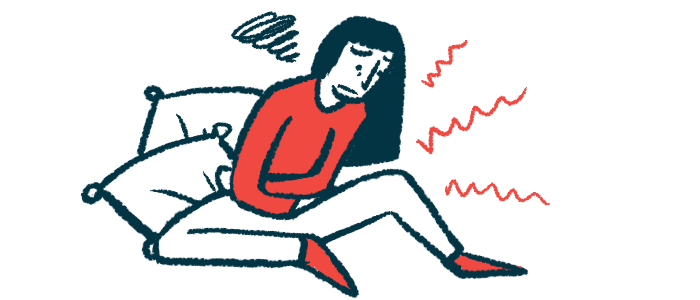Myrbetriq Plus Pelvic Floor Exercises Fail to Ease Overactive Bladder
Pilot trial in Parkinson's shows some benefits, supporting further study

Combining Myrbetriq (mirabegron) with modifications like pelvic floor exercises failed to ease overactive bladder symptoms in people with Parkinson’s disease in a pilot clinical trial, the study’s main goal.
But the treatment, approved for overactive bladder, when used with such behavioral modifications did increase the amount of urine patients were able to expel with each urination, relative to patients using only pelvic floor exercise. But this benefit was temporary.
These findings are consistent with those from previous trials in other patient populations, trial researchers reported, and support larger studies of this combined treatment approach for overactive bladder in Parkinson’s.
The pilot trial, called MAESTRO (NCT02092181), “provides information that may be useful in conducting a larger-scale trial, as well as insight into the effective use of assessment tools for this patient population,” the scientists wrote.
Findings were detailed in the study, “A Novel Trial of Mirabegron and Behavioral Modification Including Pelvic Floor Exercise for Overactive Bladder in Parkinson’s Disease (MAESTRO),” published in the journal Cureus.
Overactive bladder a problem for estimated 65% of Parkinson’s patients
An estimated 65% of patients experience such Parkinson’s nonmotor symptoms as overactive bladder, the need to urinate frequently or urgently, sometimes accompanied by incontinence (an inability to retain urine), the researchers wrote. It commonly treated with anticholinergic medications, which work to block the receptors of a chemical messenger, called acetylcholine, responsible for the contraction of bladder muscles.
However, these medications can exacerbate the disease’s cognitive problems, including a risk of dementia, and gastrointestinal symptoms like constipation.
“The combination of potential side effects of anticholinergic agents suggests that identifying effective alternatives for treating [overactive bladder] in [Parkinson’s disease] patients is desirable,” the scientists wrote.
Myrbetriq, by Astellas Pharma, acts on a different target in addressing overactive bladder. By selectively activating the beta 3 adrenergic receptor, the treatment prevents the contraction of the bladder muscles, helping the bladder store more urine, and it decreases the frequency of bladder contractions. Shown to be effective in clinical trials that led to its approval, these studies did not include people with neurological conditions like Parkinson’s.
Pelvic floor exercises, used to strengthen pelvic muscles and improve bladder control, coupled with other types of behavioral therapy also has been explored as a therapeutic alternative for bladder problems, including in a small trial in Parkinson’s patients with urinary incontinence.
Researchers in the U.S. and U.K. conducted the MAESTRO trial to investigate the potential of combining these two treatment approaches. The study enrolled 30 adults with Parkinson’s and overactive bladder, as defined by urinary urgency and incontinence, at its single center in Washington state. All were randomly assigned to 10 weeks of Myrbetriq taken daily, at 25 mg or 50 mg, plus behavioral therapy including pelvic floor exercises — specifically, the Kegel exercises — or to a placebo and behavioral therapy as a control group.
Myrbetriq doses increased from 25 to 50 mg at the study’s mid-point (around five week), with the higher dose continuing if tolerated by a patient.
All were given educational instructions, including a 15–20 minute presentation on bladder anatomy and function, and on how to perform Kegel exercises and integrate them into daily activities.
Participants in both groups recorded their exercise regimen and bladder symptoms daily.
The study’s primary goal was changes in overall bladder symptoms, using the overactive bladder-symptom composite score (OAB-SCS), from the study’s start to the final clinic visit. Secondary goals included symptom changes from study start with a higher Myrbetriq dose, mean numbers of urinations and incontinence episodes within 24 hours, and patient perceptions of symptom severity.
No significant reduction in overactive bladder symptoms was reported over the 10 weeks, meaning the trial failed to meet its main goal.
Most secondary goals also were not met, with patients in both groups experiencing similar episodes of urgency urinating, incontinence, and number of urinations per day.
Transient increase in urinary volume with Myrbetriq supports further study
People in the Myrbetriq group, however, experienced a significant 15.6% increase in the mean volume of urine released in each urination — a mean change of 29.9 mL between the study’s start and a clinic visit after higher dosing.
In contrast, the control group recorded a non-significant decrease in the volume of urine released per urination over the same period — a mean change of 13.6 mL, or 5%.
However, this improvement with Myrbetriq’s use was not evident at a final clinic visit, “suggesting the absence of a dose effect or that the effect was not maintained,” the researchers wrote.
One patient in each group left the study — a control group participant due to psychosis, and a Myrbetriq group participant due to abdominal cramping. The most common side effects reported by more than one patient given Myrbetriq were “diarrhea, loose stools, or constipation (with resultant hemorrhoids),” the study noted.
More adverse events were reported by control group than Myrbetriq-treated patients, which “suggests that the underlying health issues of the patient population being studied may make identification of treatment-related side effects more difficult,” the researchers wrote, supporting further trials.
“A few small-scale studies have suggested that [pelvic floor exercises] alone (without medication) may reduce urinary incontinence in [Parkinson’s] patients,” the researchers wrote. This pilot trial’s lack of significant effectiveness in either study group suggests its enrolled patients “may have had more significant barriers to improvement of [overactive bladder], and thus may have been affected less by the addition of mirabegron [Myrbetriq] than patients with less intractable bladder control issues.”
A larger, longer, and well-planned trial is needed to fully assess the potential benefits of Myrbetriq and behavioral modifications in people with Parkinson’s disease, they concluded.







